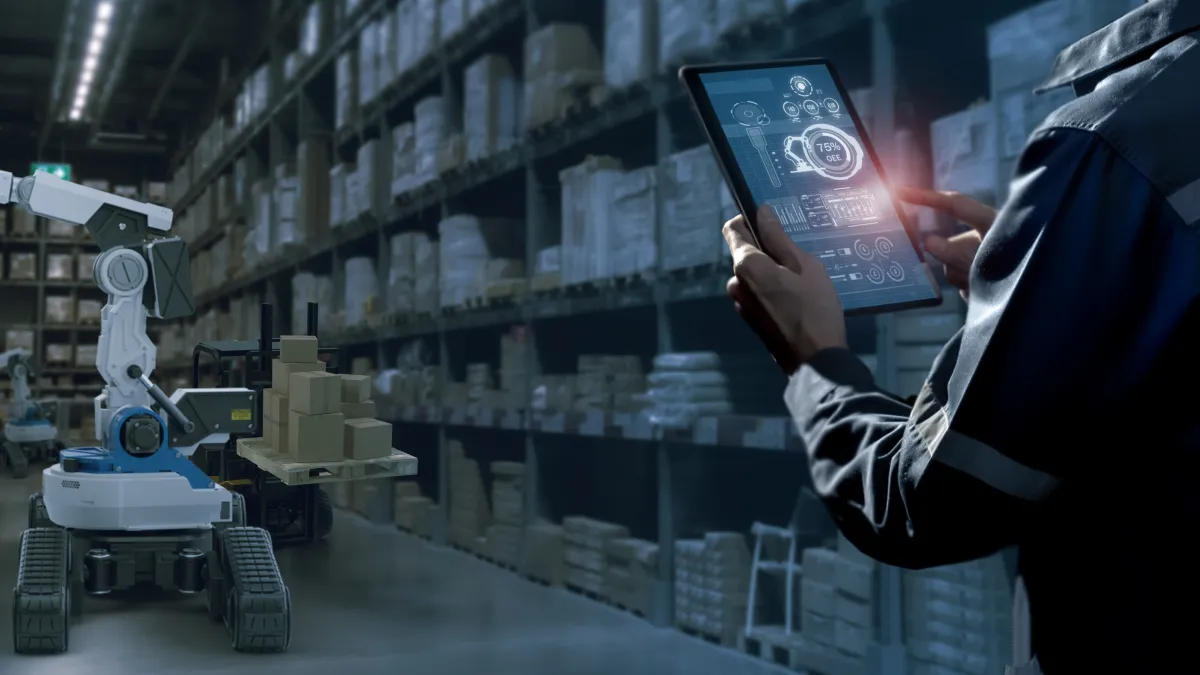From visibility to autonomy: AI’s role in optimizing supply chains
Blog: OpenText Blogs

From geopolitical disruptions to shifting customer expectations, businesses need more than just digital connectivity, they need intelligence to thrive in today’s volatile global economy. That’s where Artificial Intelligence (AI) steps in, transforming traditional supply chains into autonomous, insight driven ecosystems.
Powered by real-time analytics, intelligent automation, and connected IoT devices, today's most innovative businesses are rapidly embracing AI-driven technologies to proactively manage complexity, enhance transparency, and unlock unparalleled efficiencies.
Creating an ecosystem that enables smarter collaboration
Businesses that connect EDI and APIs with their ERPs, e-commerce platforms, and supply chain management systems gain a competitive advantage in agility, efficiency, and customer satisfaction, for example:
- A retailer integrates EDI with its ERP and e-commerce platform to automatically adjust inventory levels and reorder stock based on real-time sales data, reducing out-of-stock and speeding up replenishment.
- A manufacturer connects EDI and APIs with its supply chain management system to automate order processing and shipment tracking, eliminating manual data entry and reducing order cycle times.
- A distributor uses EDI-to-API integration to provide real-time order status updates and accurate delivery estimates to customers, improving transparency, and trust across the supply chain.
This level of B2B integration enables real-time data collection across multiple internal and external systems that can then be optimized, or cleaned, for AI consumption. It also makes for more seamless operations, faster onboarding, and smoother trading partner relationships within their supply chains.
Accelerating automation through AI-powered traceability and IoT
EDI and B2B integration solutions are increasingly leveraging IoT devices and sensors, enabling real-time data collection from logistics, warehouses, and more, further supporting live inventory updates and supply chain optimization.
Many supply chain traceability solutions also now link AI with IoT sensor networks, providing a transparent view of shipments, assets, and production status across global networks.
With these measures in place, businesses can monitor goods in transit, detect anomalies, ensure regulatory compliance, and grow customer trust by optimizing their supply chain and customer experience.
This work also reduces manual effort, minimizing errors, and accelerating productivity; enables intelligent workflows that adapt to changing conditions, and improves data quality across a supply chain.
Gaining automation through supply chain visibility and predictive analytics
Visibility has long been the holy grail of supply chains. Yet many organizations still struggle with fragmented data, siloed systems, and delayed insights, keeping decision-making reactive instead of proactive.
Doing the necessary work up front – creating a connected, automated ecosystem that enables smarter supply chain collaboration – not only improves how businesses interact with suppliers, customers, logistic providers, and financial institutions, it also aids AI-readiness.
With AI layered on top of a strong, secure, and connected digital supply chain foundation, businesses can:
- Gain real-time visibility into inventory levels, shipment status, and trading partner performance to improve responsiveness and decision-making.
- Leverage actionable insights to forecast demand more accurately, automate inventory replenishment, and minimize costs from overstocking or stockouts.
- Receive intelligent alerts that detect anomalies and recommend immediate actions, while predictive analytics anticipate disruptions and suggest workflow improvements across planning, scheduling, and delivery.
How OpenText helps build smarter, more connected AI-ready supply chains
AI in supply chains has moved far beyond simple automation. Modern solutions like OpenText Business Network Cloud integrate deep learning and predictive analytics to optimize end-to-end supply chain operations and collaboration, so that supply chains are not just connected but intelligent.
OpenText Business Network Cloud has embedded AI into its Trading Grid platform and linked B2B integration solutions, to provide an AI self-service advisor that assists with day-to-day operations, so users:
- Get instant, accurate answers in plain language to use OpenText Trading Grid more efficiently as part of supply chain operations
- Gain deeper supply chain insights linked to business data by finding and sharing contextual responses based on customer-specific B2B and EDI inquiries
- Analyze simplified EDI payload and transaction information shared in business-ready language so everyone in an organization can understand it regardless of technical expertise
- Achieve faster resolution times by offering clear, actionable guidance on complex error codes while also providing the ability to create a support ticket while in the app.
OpenText’s expertise ensures the path from visibility to autonomy is seamless, secure, and scalable, so every supply chain is not just surviving but thriving with AI.
The post From visibility to autonomy: AI’s role in optimizing supply chains appeared first on OpenText Blogs.
